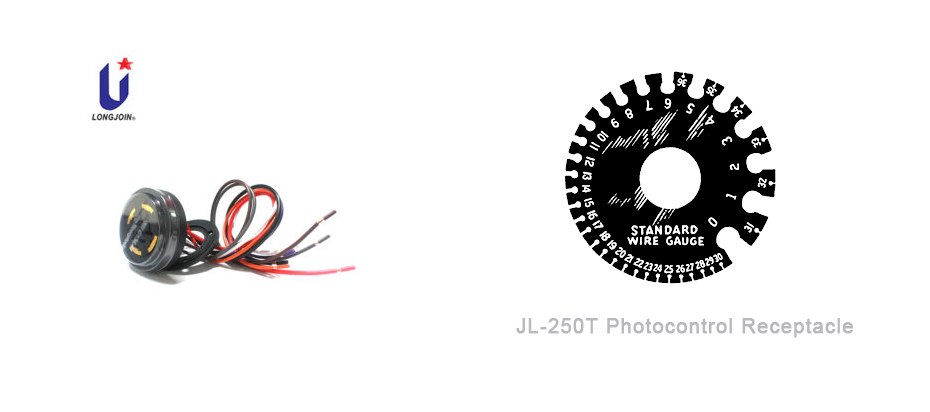How can we help you?

How can we help you?


Introduction
Wire gauge is critical that affects power, safety, and lifespan. Incorrect wire size causes overheating and reduces efficiency. Photocontrols automate outdoor lighting. They respond to ambient light. Proper wiring improves reliability and ensures stable operation.
Basic Definitions and Importance
Wire gauge refers to the thickness of an electrical conductor. It is measured in American Wire Gauge (AWG). Lower gauge numbers indicate thicker wires. Thicker wires handle more current with less resistance. Resistance impacts power efficiency and safety. Using incorrect wire gauge leads to overheating. This can lead to electrical failures and potential fire hazards.
Outdoor lighting relies on precise wiring specifications. Incorrect gauge selection reduces system lifespan. Choosing the right wire gauge improves power transmission and stability. It ensures photocontrols operate correctly under varying loads.

Current Capacity and Wire Gauge Selection
Current capacity depends on wire gauge. Thicker wires support higher loads. Overloading causes excessive heat and damage.
● 16 AWG: Suitable for low-power outdoor lights.
● 14 AWG: Common for standard streetlights.
● 12 AWG: Ideal for high-power LED fixtures.
● 10 AWG: Used for industrial outdoor lighting.
Wire gauge selection also depends on installation length. Long-distance wiring increases resistance. Lower gauge numbers (thicker wires) are recommended for extended cable runs. Using the correct wire gauge prevents power loss and overheating.
Voltage Requirements
Photocontrol outlets work with multiple voltage levels. Standard outdoor lighting operates at 120V-277V. Industrial applications may require 480V.
● 120V: 14 AWG is sufficient for short connections.
● 240V: 12 AWG is preferred for safety.
● 277V: Requires 10 AWG to handle higher loads.
● 12V-24V: Used in low-voltage outdoor systems, requiring 16-18 AWG.
Voltage drops occur over long wiring distances. Choosing the right gauge prevents flickering lights and unstable operation. Matching voltage requirements with proper wiring improves efficiency.
Conductor Materials
Conductors affect power transmission and durability. Copper and aluminum are the two main materials used.
● Better conductivity than aluminum.
● More resistant to corrosion and oxidation.
● Suitable for long-term outdoor use.
● Higher cost but superior performance.
● Lighter and more cost-effective.
● Requires larger gauge size to carry the same current as copper.
● Prone to oxidation, leading to weaker connections.
● Needs special connectors to prevent overheating.
Copper wiring is the preferred choice for photocontrols and light sensor switch installations. It ensures consistent power delivery and long-term stability.
Electrical safety is essential for photocontrol wiring. Poor wiring can lead to fire hazards and malfunctions.
● Insulation: Stops short circuits. Prevents electrical leaks. PVC, rubber, and silicone provide strong protection.
● Heat Resistance: Outdoor wires face high temperatures. Must handle extreme weather. Choose heat-rated cables.
● Moisture Protection: Waterproof insulation prevents corrosion. Avoids power failures. IP-rated cables work best.
● Voltage Rating: Must match system voltage. Wrong wiring causes overheating. Leads to damage.
● Compliance with Standards: Follow UL, IEC, or NEC rules. Certified wires last longer. Improve safety and reliability.
Selecting high-quality wiring improves photocontrol lifespan and safety.
Load Matching and Installation Considerations
Photocontrol wiring must support connected light fixtures. LEDs use less current than traditional lamps. However, larger installations require lower gauge numbers.
● Power consumption: Higher wattage requires thicker wires.
● Distance: Longer wires increase resistance and voltage drop.
● Environmental conditions: Outdoor cables must be weatherproof.
Electrical Design Principles
Good design ensures performance. Proper wiring prevents failures.
● Use proper wire gauge for the load.
● Secure all connections to prevent loose contacts.
● Do not overload circuits to prevent overheating.
● Use surge protection to protect parts.
● Use proper grounding to reduce electrical risks.
● Follow manufacturer recommendations for installation.

Correct wiring improves photocell sensor and photoelectric sensor performance. It ensures photocontrol systems work efficiently in all conditions.
Wrap Up
Wire gauge matters and provides safety and efficiency. Proper wiring prevents overheating and failures. Outdoor lighting needs high-quality materials. Safe wiring extends photocontrol lifespan. Lighting control depends on correct installation.
Wire gauge controls the amount of current a wire can handle. A smaller gauge means a thicker wire. This can carry more current whereas thin wires may overheat and fail. Photocontrol outlets need the correct gauge for safety and efficiency. Wrong gauge selection causes voltage drops and poor performance. It can also lead to fire hazards. The right gauge keeps power flow stable. It also improves safety and extends lighting system lifespan.
A small wire gauge overheats easily. It may not handle the required current. This leads to power loss, insulation damage, and fire risks. Small wires also have high resistance, which causes voltage drops. A large wire gauge is unnecessary for low-power systems. Thick wires cost more and are harder to install. They may not provide extra benefits. The correct gauge depends on voltage, load, and installation distance. Proper selection ensures optimal performance and safety.
Wire gauge impacts voltage drop in a circuit. Thinner wires have higher resistance. This causes more voltage loss over long distances. Lower voltage reduces lighting efficiency and performance. Thick wires minimize resistance and maintain stable power. For outdoor photocontrols, choosing the right gauge prevents energy waste. Proper wiring ensures reliable operation and longer system life.
External link